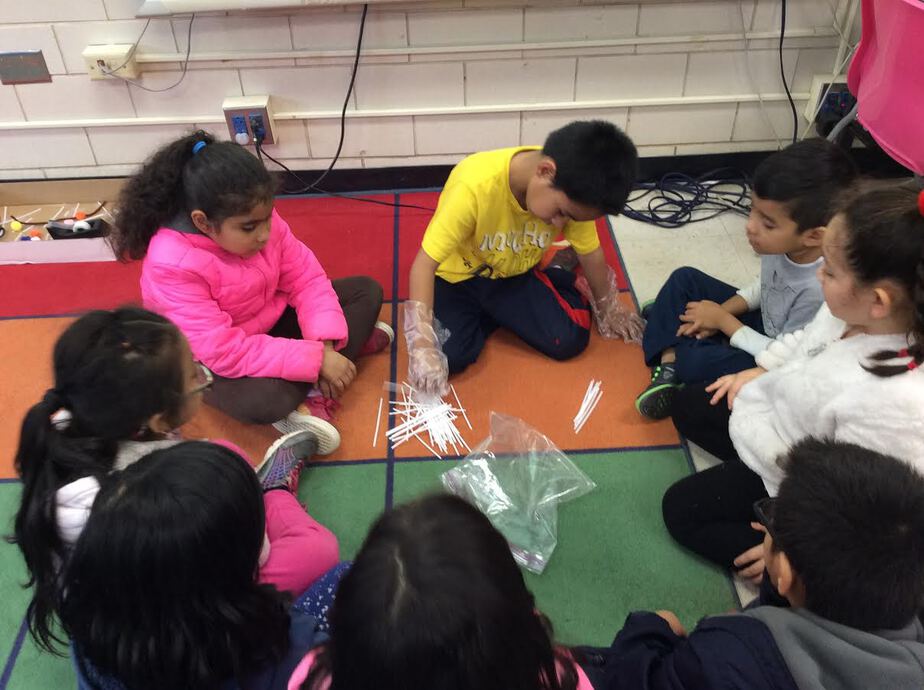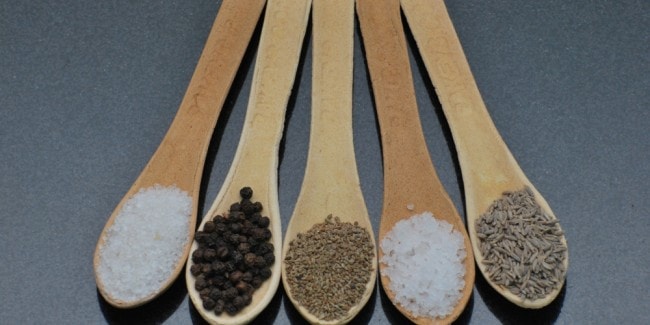Researched and written by Supriya DG.
When Grade 1 students at Henderson Mill Elementary School, a STEM certified school in Atlanta, contacted the creator of edible cutlery for a project, they were walking the powerful path of civic mindedness by bridging the gap between education and science and innovation and conservation.
Like the recycling project of the children at Henderson Mill, the journey of Narayana Peesapaty, founder of Bakeys Edible Cutlery has been a work in progress. Peesapaty’s Eureka moment was when he noticed several passengers scooping up their food with Papad ─ a crispy Indian snack served with meals ─ instead of using their plastic forks and spoons.
In that moment, he developed the idea of enabling a consumer to use as well as eat his cutlery. This, by creating a spoon by mixing Sorghum (or jowar in India) with some other grains, to form the shape of a spoon, soup-spoon or chop sticks.
“When I saw a primary school book of Taiwan carrying Bakeys as a lesson in their science curriculum, I was thrilled and convinced that my message has reached the right target”
Peesapaty’s wife Pradnya Keskar ─ who has taken on the task of managing communications for the company ─ reminisces about Peesapaty’s initial foray and experiments, underscoring the learning and the continuous failures coupled with the luck that enabled the eventual realization of a dream.
“For a man who struggled to make a cup of tea even”, she writes, “he started experiments in the kitchen after his job and could actually make spoons and other cutlery shapes successfully. Later, he experimented with various moulds and variety of flour mix combinations to be sure he could make it a commercial venture and start manufacturing spoons to sell as a small business. He started his own company towards the end of 2006 and left his job to pursue his dream project full time.” Keskar further explains that Peesapaty’s scientific background and work in the areas of researching ground water, power sector reforms, forestry, agriculture in India and policies in the aforementioned areas as well as rural development and rural livelihoods, forest products, post-harvest products since 1992 laid the groundwork for his innovation.
But it was when he was researching semi-arid tropic crops, he realized that debilitating economic practices and harsh realities in the agricultural industry contributed to the decline of productivity and desperate measures by poor farmers, she adds.
In an email interview, Peesapaty talked about how he arrived at the point of self-realisation and his impending need to act, given the debilitating forces of climate change. He writes, “It was the longest wait I had for recognition of the product and its purpose…I knew it was not money that I chased but the deep-rooted concern that this plastic will one day become a monster beyond control, that the farmers will give up crops that fed them healthy meals and groundwater will be the most precious thing in the whole world.” His project to find a solution for society’s misuse of an ethical way of living became a mission, he adds.
Yet, juggling roles as a scientist, a businessman, conservationist and an entrepreneur cum innovator has been tough for Peesapaty.
“The realization dawned on me when I could see the lacunae in technology that needed urgent attention and no one except me knew at that point what exactly I wanted the machine to perform. We had no money to create and pay a team. Workers became part of my tech journey and wife managed almost several issues with 3 other volunteers”, he admits.
But entrepreneurial success has not diminished Peesapaty’s disregard for ecology and conservation. Since November 2016, he has turned his attention to developing and improving technology so as to enable large-scale production. He sees the challenges of accepting a new healthy behaviour for consumers. “It is neither an easy nor a comfortable one, as we are in a comfort zone. Ventures like mine are many, and each one has his/ her struggle as these are change makers for the betterment of mankind”. He adds that “although a few may not have a commercial agenda, every venture has its own script”.
With ecological conservation gathering the attention of most countries, sustainable entrepreneurship is a journey with an open market.
A global consumer study conducted by Unilever estimates a market opportunity worth over $1 trillion for brands that can effectively and transparently market the sustainability of their wares.
Peesapaty is hopeful of education as a means to leverage innovation and generate ecological consciousness. Reacting to the Henderson Mill Elementary School’s project on conservation by using less plastic and minimizing garbage, he says “I am glad the school children are thinking and willing to act at their own levels be it within a school or in family or neighbourhood. This trend is seen in several schools now, across the world. The teachers are taking it upon themselves to make children aware and also to take it up as a practice/ practical project to inculcate an experiential education…We have spoilt our life by indulgences and recklessness but let us do something positive and long lasting to make our kids healthy, happy and caring for one another and nature.”

Students of Henderson Mill Elementary work on their recycling project
Meanwhile, in a Skype conversation with this writer, Ms Tahtinen’s First Grade class at Henderson expressed their dismay at the 912 plastic forks and straws that they had collected in a week. They were graphing their findings and working with the idea of reducing the use of plastic. They are pursuing their attempt to Skype with Narayana Peesapaty and exploring the possibility of using edible cutlery in their cafeteria. These students have brought a way forward to encourage an ethically minded pursuit of science that is both meaningful and beneficial to the world.
This article was first published on NRIPulse.






